Recalling Swami Vivekananda’s Influence on Ma.Ko.
Pandit Gopalakrishna Iyer (Ma.Ko.)
Pandit M.Gopala krishna Iyer (1878-1927), popularly known among Tamilknowing people as Ma.Ko., was a celebrated Tamil poet, translator, patriot, teacher and editor of literary journals who strained every sinew and nerve to promote the right values among the youth, having come under the influence of Swami Vivekananda when he was hardly 19.
In 1897, M. Gopalakrishna Iyer had accompanied Bhaskar Sethupathy, the Raja of Ramnad, to Pamban to receive Swami Vivekananda when he returned after his historic visit to America. That visit surely left an indelible impression on young Gopalakrishna Iyer’s mind and this found expression in his writings and activities in various ways.
Song of Sannyasin in Tamil|
In July 1895 while in New York, Swami Vivekananda had composed 13 stanzas under the title ‘Song of the Sannyasin’. Ma.Ko. rendered a splendid Tamil translation of these 13 stanzas and published them in the 1904 July issue of Tamil journal Viveka Chintamani (pp.71- 75). It was reviewed in the 1904 September issue of Vivekabhanu. In this review the editor lauded the manner in which Ma.Ko. had absorbed the ideas of Swami Vivekananda.1
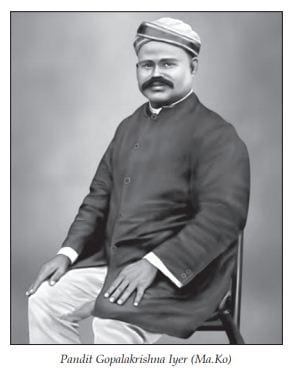
Ma.Ko’s translation of ‘Song of the Sannyasin’ was proof of the extent to which he was drawn to the magnetic personality of Swamiji. Swami Vivekananda ends each one of the 13 stanzas with the refrain, ‘Sannyasin bold! Say, ‘Om Tat Sat Om.’ Using his creative skill, Ma.Ko. gives 13 different translations for the phrase ‘Sannyasin bold’! Obviously, it is the dynamic, vibrant personality of Swamiji himself that must have inspired Ma.Ko. when he translated the ‘Song of Sannyasin’. While Swamiji would have referred to a bold Sannyasin in general, various powerful synonyms Ma.Ko. has used makes one feel that he had no ordinary Sannyasin in mind, but the very lion among Sannyasins, Swami Vivekananda! In Ma.Ko’s translation, we can see Swami’s magnetic personality full of power, courage and imperturbable calm before our mind’s eye.
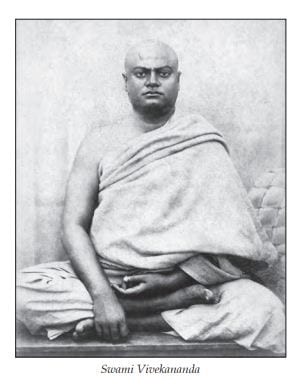
When he published the translation of ‘Song of the Sannyasin’, Ma.Ko. dedicated it to his eldest brother Jagadeesa Iyer, stating that Jagadeesa Iyer was ‘the first and best interpreter of the spirit of the teachings of the Great Swami Vivekananda.’
In the elegy he wrote on the demise of Jagadeesa Iyer, Ma.Ko. says that Jagadeesa Iyer considered Sri Ramakrishna as his Guru, very much in the fashion Eklavya took to Drona. He further asks his departed brother whether he left this world to listen to Swami Vivekananda in heaven! Ma.Ko. also refers to his brother as one who viewed the king and pauper with the same vision which clearly brings out what an evolved soul Jagadeesa Iyer was.
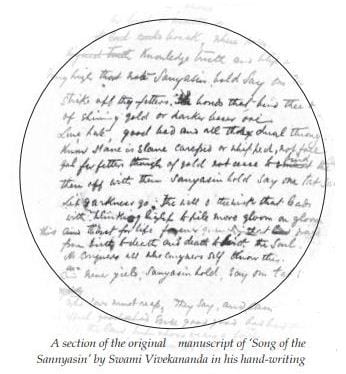
Ma.Ko. was third of the four brothers: Jagadeesan, Paramasivam, Gopalakrishnan (Ma.Ko.) and Duraiswami. One can say that all four of them were influenced by Swamiji. The love and adoration of the entire family for Swamiji was such that the first child born in the family after Swamiji’s visit to Madurai was named Narendranath. This child was born to Duraiswami Iyer, the youngest of the brothers. Also all four brothers exercised considerable influence in Madurai and so when Ramanujacharya was mobilizing funds for Ramakrishna Mission, all the brothers actively participated and mobilized a good collection from Madurai and neighbouring areas.
Ma.Ko. became the secretary of Vivekananda Union in Madurai. In the meanwhile, his love of Tamil and his love for the student community inspired him to start an organization called Madurai Manavar Sendhamizh Sangam, which he founded in May 1901. In 1916, under the auspices of this organisation, he started a literary journal called Vivekodhayam and became its editor. The choice of name for his journal once again is proof of his love and reverence towards Swami Vivekananda. This organization was also running a library in the name of Swami Vivekananda.
He had served as a teacher in the Tamil Dept of Madura College, known as Native College during the early part of the 20th century. As a Tamil teacher he inspired in his students not only love of Tamil but adoration of Swamiji as well. Almost all his students had memorized his translation of the Song of the Sannyasin (Sannyasi Geetham in Tamil) and exhibited a keen interest in bringing it out as a small booklet. While bringing it out in 1910, he acknowledged in his preface the enthusiasm all his students had displayed in wanting to see it brought out as a book.
While still on the subject of his students, it is interesting to read the reminiscences of Rangasami Iyer who was student at Madura College in 1907-09 and who later became President of Sri Ramakrishna-Vivekananda Vedanta Sanga, Sivaganga (in southern Tamilnadu) which office he held from 1950 till 1986. Rangasami Iyer had come under the inspirational influence of Ma.Ko. when the latter was a lecturer at Madura College.
While recalling his student days, he has recorded how he enjoyed listening to Gopalakrishna Iyer’s translation of Swamiji’s ‘Song of the Sannyasin’:
Gopalakrishna Iyer was a majestic personality with a resonant voice. He was part of the reception committee headed by King Bhaskara Sethupathy when Swami returned from US to India via Sri Lanka. He had made an excellent Tamil translation of the 13 stanzas which were composed by Swamiji under the title ‘Song of the Sannyasin’ and I had the privilege of listening to Gopalakrishna Iyer as he sang them. I enjoyed listening to his rendering so much that I memorized them all. . . I want to cherish the ‘Sannyasi Geetham’ and so I ensure that every year, on the holy occasion of Vivekananda’s Jayanthi, Swamiji’s ‘Song of the Sannyasin’ is recited along with Gopalakrishna Iyer’s Tamil translations at Sri Ramakrishna Primary school, Sivaganga.2
Sri Rangasami Iyer’s son, Sri R. Venkatakrishnan who is now the President of Sri Ramakrishna Primary School, Sivaganga, maintains this remarkable legacy to this day and Swamiji’s Songs and Gopalakrishna Iyer’s translations continue to be recited on Vivekananda Jayanti.
That Ma.Ko. was closely associated with the Ramakrishna Math is also evident from his translation of the beautiful speech, ‘Why is Hindu a Vegetarian’ made by Swami Abhedananda in the Vegetarian Society, New York in 1898. Ma.Ko’s translation featured in his collection Arumporuttirattu published in 1915.
Ma.Ko. moved to National College, Trichy in 1919, where he served as Head of Department of Tamil, till his demise in April 1927. At the request of his students he started another journal by name Nachinarkiniyan. The influence of Swami Vivekananda was evident from the excellent way in which he discharged his duties and his students kept bagging the gold medals from Madras Presidency. Kaviyogi Sudhananda Bharathi happened to visit Ma.Ko. when he was serving in National College and he records this meeting in his Autobiography. Kaviyogi says,
Ma.Ko. spoke about his life from the time he met Swami Vivekananda till date.3
Obviously, Ma.Ko. must have considered this meeting as a life-defining moment in his life. He continued to translate Swami Vivekananda and one of the translations appeared in the 1926 issue of Nachinarkiniyan under the title the three qualities of a patriot. This is a translation of Swami Vivekananda’s address at Victoria Hall, Chennai on 9 February 1897 and it carries the power, flow and passion in Swamiji’s speech.
References to Sri Ramakrishna and Swami Vivekananda in Ma.Ko’s Works
The impact of the teachings of Sri Ramakrishna and Swami Vivekananda on Ma.Ko. is such that he refers to them or quotes them wherever applicable—whether he is writing a scientific essay, a political article or an elegy.
Here are some instances:
Article on Surat Congress
In his exhaustive article on the Surat Congress of 1907 published in December 1907 issue of the Madurai based journal Vivekabanu, Ma.Ko. narrates with objectivity the split in congress following the pandemonium during the Congress session. As pointed out by Sri Pe.Su.Mani (Vivekananda Vidya Prashasthi awardee) Ma.Ko., who was soaked in Vivekananda’s Song of the Sannyasin, quotes from it to throw light on the happenings in congress. Mr. Morley, the secretary of State for India, had observed that in matters concerning Governance in India, the Govt. must ensure that they should not exclude the old members of the Congress party. Ma.Ko. comments that the old members who were mostly moderates were thrilled by this observation of Mr. Morley and got misled. Here Ma.Ko. quotes the following lines from Swamiji’s ‘Song of the Sannyasin’:
The will o’ the wisp that leads
With blinking light
To pile more gloom on gloom
Ma.Ko. suggests that the old members of the congress should have realized that Mr. Morley’s words were will o’ the wisp promising light, but would actually lead them to gloom. They should never have allowed themselves to be misled by Mr. Morley.
Essay on Carnivorous Plants
He wrote several essays on subjects connected to botany and zoology where he links the scientific data to human life. In fact, he uses the scientific data as a springboard to say something more sublime and higher to lead the youth towards a higher, more purposeful life. And naturally the impact of Swami Vivekananda is there when he refers to a higher, purposeful life. For instance, in his essay on carnivorous plants, he speaks of different kinds of vegetation like butterworts, sun-dew, bladder-wort, fly-trap and pitcher-plant and explains in detail how they feed on different kinds of insects. Even as he lists them, he anticipates the question from non vegetarians that when plants themselves are given to eating insects, what is wrong if human beings eat meat. Having put that question, he answers it saying, ‘Even if we take it that man is naturally a non-vegetarian, we must remember the words of Swami Vivekananda who has said that man is born to win over nature, not follow nature blindly’ and so for man’s own good he must be a vegetarian.4
Essay on the Pearl
Likewise, in his essay on ‘The Pearl’, Ma.Ko. writes in detail about the origin of pearls, how they are formed as also the pearldiving methods of people from different nations. In the concluding part of the essay, he surprises us by quoting Sri Ramakrishna and compares the process of the formation of the pearl with the aspiration for liberation or mukti! A person aspiring for liberation keeps on searching for the guru and perseveres till he finds him and receives initiation, just as the oyster leaves its place from under water, floats to the surface, keeps itself open and waits for the rain drop to fall inside it and eventually forms the beautiful pearl!5
Elegy on V. Krishnasami Iyer
V. Krishnasami Iyer, who founded the Sanskrit college in Chennai must have been a friend of Ma.Ko. as is evident from the elegy Ma.Ko. has written in his honour. Here Ma.Ko. refers to Krishnasami Iyer’s association with Ramakrishna Movement. Ma.Ko. hails Krishnasami Iyer for having made liberal donations to Sri Ramakrishna Mission. He refers to Ramakrishna Mission as an organization that transcends barriers of religion and as one that helps people to be liberated from worldly attachments.6
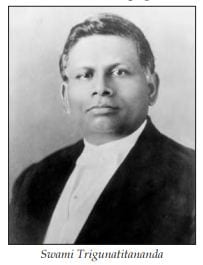
Essay on Evils of Dowry
Ma.Ko. strongly advocated women’s education and empowerment and had raised his voice against the evils of dowry system. In an article that appeared in the February 1914 issue of Purna Chandrodayam, he lists the travails that the father of prospective bride undergoes. In the course of this article he addresses the young men in powerful verse where he echoes Swamiji’s ‘Awake, Arise’ in connection to spreading awareness against dowry system.7
Elegy on Swami Shraddhananda
Ma.Ko. wrote an elegy on Swami Shraddhananda [the leader of Arya Samaj] who was killed in Delhi by a fanatic in December 1926. Swami Shraddhanada was an Indian educationist and an Arya Samaj missionary who followed the teachings of Swami Dayananda, the founder of Arya Samaj.
In his elegy Ma.Ko. pays a great tribute to Swami Shraddhananda and lists his mighty contribution and the deep grief caused by his death. Here he also draws a parallel between Swami Shraddhananda and Swami Trigunatitananda, who was a disciple of Sri Ramakrishna and an associate of Swami Vivekananda. Swami Trigunatitananda also died at the hands of a fanatic when Swami was calmly speaking at the Hindu temple at San Francisco in USA. After drawing this parallel in the elegy, Ma.Ko. provides further information about Swami Trigunatitananda in the notes:
There were many Americans who embraced Hinduism and with their resources the dynamic Swami Trigunatitananda organized to build a Hindu temple in San Francisco near the Pacific. A fanatic who could not tolerate Swami Trigunatitananda’s popularity and influence threw a bomb at him in the temple and killed him. Swami Trigunatitananda who was full of compassion understood that the act was committed in ignorance and forgave him.
Swamiji’s Influence|
The impact of Swami Vivekananda is evident in the way Ma.Ko. discharged a variety of duties with commitment and dedication. He fulfilled all these multifarious duties with a clear focus on promoting the right values in the youth of India.
One of his books entitled, Filial Duty was prescribed as a textbook in Chennai and Ceylon for Intermediate students and the authorities must have found it eminently suitable for value education. In that work Ma.Ko. narrates the stories of forty personalities drawn from the best of Eastern and Western Literatures. Some of the values Ma.Ko. had cultivated in himself including his absolute integrity, intellectual honesty, far-sightedness, simplicity, sense of duty, courage, tireless work, have all been lauded by his contemporaries. It is evident that he did not waste a single second. The editor of Amrithagunabodhini observed that Ma.Ko. continued to work and was writing articles even when he was seriously bedridden.
When his health failed he was anxious that those who had paid the annual subscription in advance for his journal should not lose their money if the journal stops coming due to his impending death. He made the announcement in March 1927 that in case of his demise, the subscribers can get the books from his publishers for the amount they have already paid. He passed away on 18th April 1927, a few weeks after he made this announcement.
Conclusion
Ma.Ko. or Gopalakrishna Iyer, an inspiring teacher and writer, made significant contribution to Tamil literature and he especially worked tirelessly and ceaselessly for instilling the right values in the younger generation. All the qualities that governed his life can be attributed to the impact of Swami Vivekananda who gave the clarion call, ‘Awake, Arise and stop not till the goal is reached’, and Ma.Ko. did not stop till the very end!
References
- Swami Kamalatmananda, ‘Swami Vivekanandar Patri Mahakavi Bharathiyar Kuriyavai’ (Mahakavi Bharathi on Swami Vivekananda), in Tamil, p 364
- Ko. Kalanjiyam, p.lxxiii
- Kaviyogi’s Autobiography, p.91
- Ko. Kalanjiyam, p.216
- Ko. Kalanjiyam, p.247
- Ko. Kalanjiyam, p.93
- Ko. Kalanjiyam p.423
Learning and wisdom are superfluites, the surface glitter merely, but it is the heart that is the seat of all power. It is not in the brain but in the heart that Atman, possessed of knowledge, power, and activity, has Its seat.
—Swami Vivekananda
Source : Vedanta Kesari, August, 2015

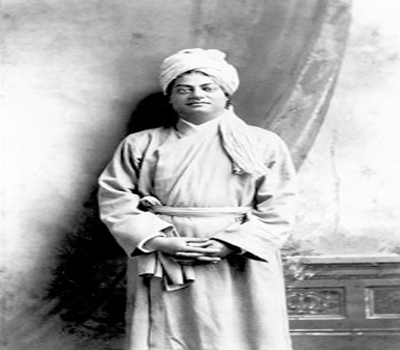
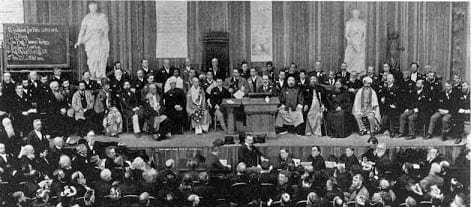

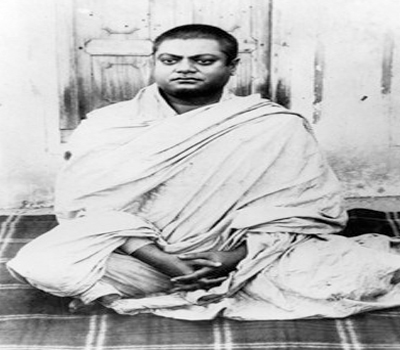
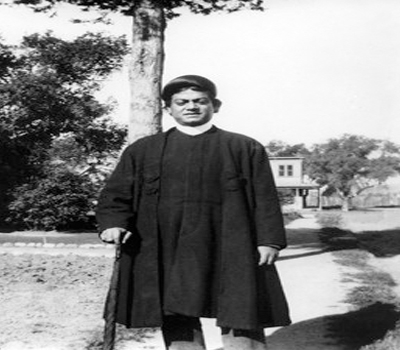
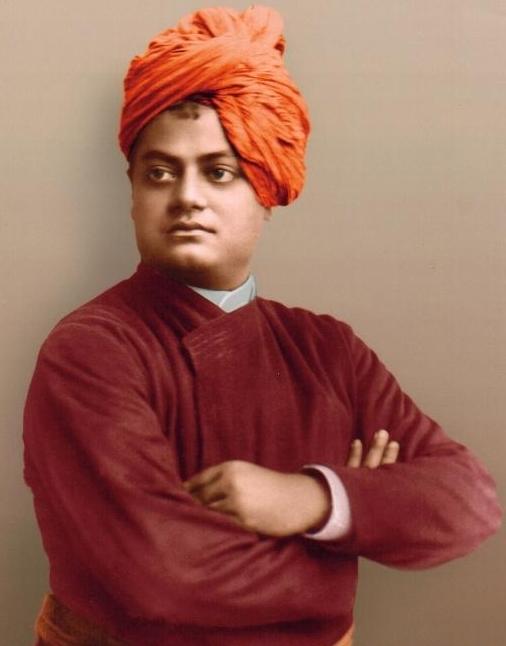
Leave A Comment